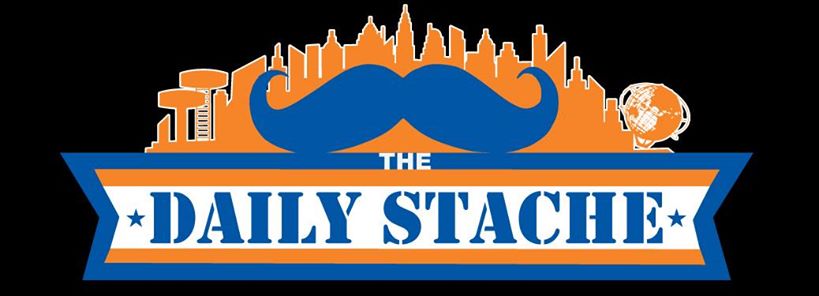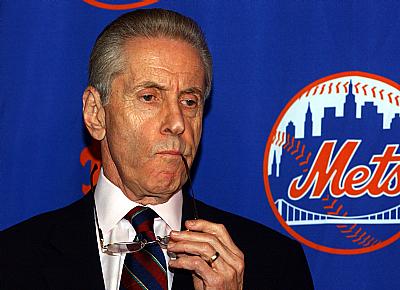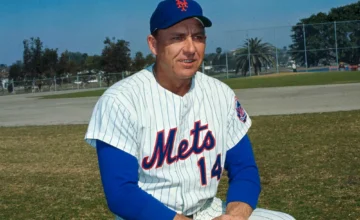The New York Mets play in the largest baseball market in the country, and perhaps the most dedicated baseball market in the entire world. They just won the National League Pennant, and they have a ton of young stars on team-friendly rookie contracts. There is no salary cap in baseball. All signs indicate that the Mets should go on a spending spree this offseason.
But, according to the team, they won’t.
The Mets opened the 2015 season with a $101,409,244 payroll. That’s $171,379,796 less than the Los Angeles Dodgers, the top-spending team, had committed to their players. It’s also less than half of what the Met’s neighbors, the New York Yankees, were spending on their team. The Mets had the 21st-highest payroll in the 30-team league. They spent less than small markets like Milwaukee and Kansas City. Next year, things won’t look much pricier.
It wasn’t always this way. The Mets were once one of the freest-spending teams in all of baseball. As recently as 2009, the Mets had the second-highest payroll in all of baseball (the Yankees were first). They were in the top five every year from 2003 to 2010. So what happened? How did the Mets become so cheap?
Buyer’s Remorse
There is an idea, still common in some baseball teams around the league, about how to build a championship team. It goes like this: you start out smart and cheap, building from within by focusing on young prospects and cheap, cost-controlled players. Then, when your affordable stars are just coming into their own, you go out and buy as many high-priced stars as you can afford to put your team over the top. You prolong the championship window by locking guys down on big-time deals. You mortgage the future to go for your big win now.
Lots of teams did this, and the Mets were one of them. For the Mets, the height of their last championship chase was 2006, when they came within one win of reaching the World Series. The Mets had young talent in the form of 3B David Wright and SS Jose Reyes, and they had acquired OF Carlos Beltrán and 1B Carlos Delgado to get them over the top. The Mets suffered infamous collapses in 2007 and 2008, and their offseason moves around that time are typical of teams trying to stay in competition. The Mets made sure that they were the high bidders on players they wanted. Some of these contracts (like the one for SP Johan Santana) worked out. Some others (like the disastrous one for SP Óliver Pérez) did not.
To preserve at least some payroll flexibility, Mets GM Omar Minaya managed to back-load several key contracts with expensive tail years and easy-to-reach vesting options. The vesting options, in particular, would later rankle with Mets fans. After 2008, the Mets suffered a brutal hangover from their win-now years.
For an example of what this looks like, check out the 2015 Phillies. They had huge amounts of cash locked up in aging stars that did them little good on a rebuilding team. They were eventually able to trade ace Cole Hamels, but his contract situation made it difficult. Phillies fans might find their woes a little easier to swallow – unlike the Mets, the Phillies got a World Series out of this strategy – but they’re in the same boat that
Mets fans were in a few years ago. The 2014 Phillies had the third-highest payroll in MLB, almost all of it due to big-money contracts given to aging stars.
By the time 2010 rolled around, the Mets’ owners were fed up with their ride on the win-now, pay-later roller coaster. They fired GM Omar Minaya and began to rebuild.
Madoff’s Ponzi Scheme
Of course, you can’t talk about the Mets’ budget without talking about the ownership group’s 2008 financial woes. Fred Wilpon, the majority owner of the New York Mets, was initially reported to have lost as much as $700 million in Bernie Madoff’s Ponzi scheme, which collapsed in 2008. Wilpon denied that figure, but rumors still swirled that he might sell the team.
The financial crunch came at a poor time. The Mets were at the tail end of their championship window, and things ended with a second consecutive collapse. In 2009, the Mets never even rose high enough to qualify as a collapse. Nevertheless, the Mets’ payroll was the second highest in MLB in both 2008 and 2009.
Ownership’s reaction was to hire a small-market GM and run their team on a budget. Sandy Alderson, formerly of the Oakland A’s, was brought in to tighten the purse strings. The Mets slowly shed the Minaya-era contracts and built up their prospect base. They fielded the 23rd-most expensive team in baseball in 2013, their lowest point in recent memory.
Will Things Ever Change?
The mystery now is if the Mets will increase their budget and, if so, how much they’ll do so. The most common believe is that the Mets will raise their budget by up to $20 million, which would put them somewhere around the league average payroll instead of in the bottom third. But public statements in the past have led fans to believe that a competitive team and a return of fans to the stands would lead to a significantly higher payroll. The conditions seem to have been met, but more spending doesn’t appear to be on the horizon.
Do the Mets intend to run a new kind of team, a cheaper one that stays perennially in competition, like the old A’s or the modern (and slightly more expensive) Cardinals? Or are they merely trying to recoup some cash for Fred Wilpon before he goes back to his old free-spending ways? We know the history of how the Mets got this cheap, but we don’t know the Mets’ future. Fans will be waiting to see.





Pingback: Why the Mets Should Target Free Agent IF/OF Ben Zobrist - The Daily Stache